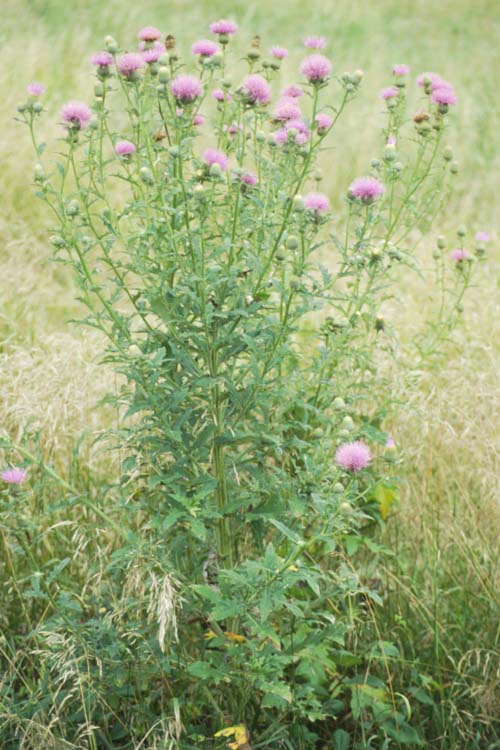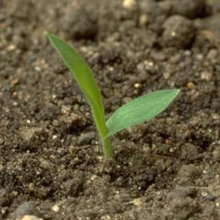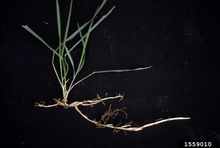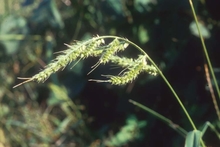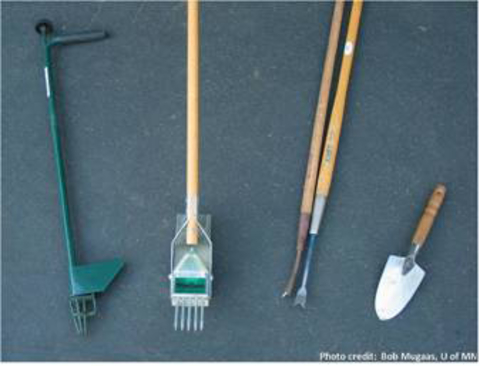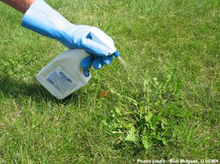Quick facts
- Identifying weeds and understanding why they're growing where they are is key to controlling them.
- Try to tolerate a few weeds as long as your lawn is generally healthy.
- Some non-chemical cultural practices favor desirable grasses over weeds.
- If you do use chemicals, different lawn situations may need different types of herbicides.
- When using herbicides, follow the label directions exactly as printed on the product container.
A weed is described as "a plant out of place." What may be a hated weed invader for some, might be a tolerable ground cover to someone else.
While sustainable lawns may have some weedy plants in them, having well-adapted grass varieties will help keep weeds to a minimum.
- A few weeds in a lawn are not a serious threat to lawn health.
- You can adjust cultural practices to keep plants healthy when controlling weeds with reduced or no use of herbicides.
- Find out the reasons behind increased weed growth before using an herbicide to kill weeds. Killing weeds without correcting underlying problems only invites continued and often increased weed invasion.
- Promote plant health to create a vigorous lawn that can prevent any serious weed problems from taking over.
- Knowing which weeds are invading your lawn is important when deciding whether or not control measures are needed and when they need to be carried out. It is also important in determining the most appropriate herbicide product to use if needed.
A weed control plan will result in the desired level of control while posing minimum human or environmental risks.
These steps are one example of a simple weed control plan:
- Identify the weed.
- Determine whether or not control measures are needed.
- Determine whether or not chemical control measures are needed.
- Determine the most appropriate herbicide product to use, if needed.
- Determine when chemical control measures need to be carried out.
Weed identification
You need to correctly identify weeds in your lawn to effectively control them. It is not necessary to identify every potential weedy plant in a yard or garden. Focus on the ones that are the most troublesome or taking over the largest area.
Find out more about common weeds in Minnesota lawns and gardens. For additional help in weed identification contact your local county Extension office.
Lawn weeds may be divided into two classes based on the way in which they emerge from the seed. The identification process begins by placing the plant into one of two broad classifications: monocot or dicot.
The term cotyledon refers to the first leaf-like structure (seed leaf) visible after the seed has emerged from the ground.
- Monocots emerge with a single seed leaf (monocotyledon).
- Cotyledons of monocots are often quite similar to future true leaves.
- Most monocot weeds found in turf are termed weedy grasses.
- Examples include crabgrass, annual bluegrass, tall fescue and quackgrass.
- Dicots emerge with two seed leaves (dicotyledon).
- In most instances, cotyledons of dicots bear little resemblance to the normal true leaves of the plant.
- Dicots are broadleaf weeds.
- Examples include such plants as dandelion, clover, ground ivy (creeping Charlie), knotweed and plantain.
Grassy weeds and broadleaf weeds are divided into groups according to how long they live.
Perennial weeds
Perennial weeds have a lifespan of more than two years. New seeds may be produced every year.
Perennial broadleaf lawn weeds:
- Canada thistle
- Dandelion
- Ground ivy (Creeping Charlie)
- Plantain
- White clover
Perennial grassy lawn weeds:
- Quackgrass
- Reed canary grass
- Smooth brome
- Tall fescue
Creeping bentgrass, annual bluegrass and rough bluegrass (Poa trivialis) can become weeds in well-watered and fertilized home lawns even though they may be considered turfgrasses in some situations.
Biennial weeds
Biennial weeds have a life span of two years. They store food reserves in the leaves and roots the first year, and produce flowers and seed the second. Examples include mullein and burdock.
Annual weeds
Annual weeds germinate from seed, grow, flower and produce seed in less than one year.
- Summer annuals germinate in the spring and mature in the fall.
- Examples include prostrate knotweed, prostrate spurge, crabgrass and yellow foxtail.
- Winter annuals germinate in fall or late winter and mature in late spring.
- Examples include shepherd’s purse, yellow rocket (sometimes known as winter cress), pennycress (mustard family) and downy brome (grass family).
Annual broadleaf lawn weeds:
- Black medic
- Prostrate knotweed
- Spotted spurge
Annual grassy lawn weeds:
- Barnyard grass
- Large and smooth crabgrasses
- Longspine sandbur
- Yellow foxtail
Cultural control methods
You can often control lawn weeds by altering your cultural practices to favor the grass plants rather than the weeds.
Cultural controls may include:
- Raising or lowering mowing height.
- Changing how often you mow.
- Lengthening or shortening time between watering.
- Increasing or decreasing how much and how often you apply fertilizer.
- Aerating the soil by allowing air, water and nutrients to reach the grass roots.
Hand-weeding or pulling weeds is also an effective way to get rid of weeds from small lawn areas. The best time to pull weeds is after a good rain or thorough watering.
Hand-weeding is low-cost but labor-intensive. It avoids needlessly applying herbicides over the whole lawn for only a few weeds.
Several tools on the market will help when you're hand-pulling weeds.
Even with the best cultural control practices, you may need to use a chemical herbicide to control a certain weed or weed population. A combination of proper cultural practices and careful use of herbicides is a good approach to controlling lawn weeds effectively.
Using herbicides
Preemergence herbicides affect germinating (sprouting) seeds of weeds. They are most effective against annual weeds that come back from seed every year.
- A preemergence herbicide does not kill the seed prior to germination.
- When the seed starts to grow and sprout, the herbicide kills the newly emerging root, shoot or both.
- This happens before the weed seedling emerges from the ground.
- If the seed does not germinate it will not be affected by the herbicide.
- To be effective, apply preemergence herbicides before you expect weed seeds to germinate.
- For control of annual summer grasses such as crabgrass, apply preemergence herbicides between May 1 and May 15.
- You can also apply them once soil temperatures in the top one-inch or so are consistently in the 50 to 55 °F range measured early in the day.
Postemergence herbicides are used to kill weeds after the weeds are visible and growing. Postemergence herbicides are usually most effective when absorbed through the leaves.
- When used according to label instructions, either liquid sprays or granular applications are effective.
- Postemergence herbicides are most effective if applied when weeds are young and growing vigorously.
- They are also very effective in the fall when perennial weeds are storing food in their roots for the next year.
Selective postemergence herbicides
Selective postemergence herbicides can control annual, biennial or perennial broadleaf weeds in a lawn without harming the lawn grasses.
- These types of herbicides cannot tell one broadleaf plant from another. They can severely damage or kill nearby trees, shrubs, flowers and vegetables if those plants are exposed.
- They must be used with great care in landscapes where trees, shrubs and flowers may be growing and may have roots intermingled with those of the grass plants.
Nonselective postemergence herbicides
Nonselective postemergence herbicides kill most green plants, both desirable and undesirable.
- These herbicides are used to control perennial grassy weeds that are not affected by selective herbicides.
- Spot treat infested areas using only enough product to wet the foliage.
- It is not necessary to drench the area thoroughly to achieve satisfactory control.
Follow the label directions exactly as printed on the product container. The label provides necessary information regarding proper product application, including required personal protective gear and how to dispose of containers.
Always consult the product label for information about:
- Preferred air temperatures for application.
- Wind restrictions related to application.
- How much time is needed following application before it will not be affected by rainfall.
- When it is safe to reenter the treated area.
Labels are legal documents that are enforceable by law should the product be used in a manner inconsistent with directions. As with fertilizers, extreme care must be taken to prevent the direct application of herbicides into surface water areas.
CAUTION: Mention of a pesticide or use of a pesticide label is for educational purposes only. Always follow the pesticide label directions attached to the pesticide container you are using. Remember, the label is the law.
Proper timing of herbicide application is important to minimize harm to the environment while effectively eliminating weeds. When weeds are large and mature, greater amounts of herbicide are usually needed and, even then, may not be effective.
For example, it is relatively easy to control small, first-year dandelions with a minimal amount of herbicide. Larger, older dandelions have a greater ability to outgrow and recover from small doses of herbicides. Where appropriate, small dandelion rosettes can be effectively hand-removed and eliminated if most of the root system is removed.
Control weeds in fall for best results
Fall is the best time to control perennial broadleaf weeds.
- Mid-September through mid-October these plants are storing energy for winter, actively growing and will readily take up the herbicide.
- A one-time, relatively low rate of application of an appropriate herbicide usually will be effective.
- Since most other plants are either going dormant for the winter or have been removed from the garden and flowerbeds, there is less chance for off-target plant injury.
Perennial grassy weeds are usually cool season grasses that are best controlled in the fall. They can also be controlled at other times of the year when they are actively growing.
For some weeds, repeated applications at 10 to 20 day intervals may be required for control. Again, always follow label instructions for length of interval between applications.
Postemergence herbicides
- Selective postemergence herbicides may be applied any time the cool season perennial broadleaf weeds are actively growing.
- For the most effective control, apply in early fall (September 15 - October 15) or in spring (late April - early June).
- Fall is preferred over spring due to greater penetration of the herbicide down into the roots and the reduced possibility of damage to flowers and other vegetation.
- Do not thoroughly drench an area with postemergent broadleaf herbicide solution.
- This may be wasteful of water and herbicides.
- It will move the herbicide beyond the plants and into the soil where it may leach or affect non-target plants.
- Spray only to wet the leaves.
Preemergent herbicides used for controlling crabgrass and other annual weedy plants must be watered into the soil to be effective. They affect the seed as it begins to germinate, but before the plant emerges from the ground.
Depending on the soil type, apply one-fourth to one-half inch of water after applying these products. This moves the material into the surface soil so it will be much less likely to be carried away in runoff.
For all weed control products, always follow label directions for how long after application the product will stay on the foliage even if rainfall or irrigation occurs. In some products, this period can be as little as two hours.
CAUTION: Mention of a pesticide or use of a pesticide label is for educational purposes only. Always follow the pesticide label directions attached to the pesticide container you are using. Be sure that the area you wish to treat is listed on the label of the pesticide you intend to use. Remember, the label is the law.
Reviewed in 2024


